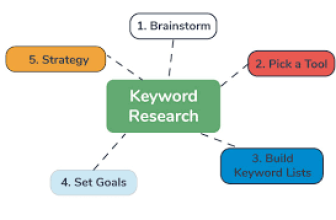
H1: Economic Growth
H2: Introduction to Economic Growth
- Definition and significance of economic growth.
- Key indicators of economic performance.
- Overview of India’s economic momentum in 2024.
H2: The Role of PMI in Economic Assessment
- Explanation of PMI (Purchasing Managers’ Index).
- How PMI reflects private sector output.
- The significance of India’s Composite PMI increase in December 2024.
H2: Factors Driving India’s Economic Growth in 2024
- Private sector performance.
- Manufacturing sector resilience.
- Service sector expansion.
- Employment growth and its economic impact.
H2: Role of Policy Reforms in Economic Growth
- Recent government initiatives.
- Structural reforms boosting business confidence.
- Impact of fiscal policies and tax reforms.
H2: Sectoral Contributions to Economic Growth
- Manufacturing sector’s recovery.
- Service sector dominance.
- Agriculture’s contribution amidst challenges.
H2: Challenges to Sustained Economic Growth
- Inflation and its effects on consumer spending.
- Global economic uncertainties.
- Trade deficits and currency fluctuations.
H2: Job Creation and Record Employment Growth
- Record job growth in 2024.
- How employment impacts household spending and economic growth.
- Future trends in employment sectors.
H2: Role of Technology and Innovation
- Digital transformation in industries.
- Government initiatives in tech and startups.
- How innovation drives productivity and efficiency.
H2: India’s Economic Outlook for 2025
- Projections for GDP growth.
- Expected trends in services and manufacturing.
- Policy priorities for sustained growth.
H2: The Global Context
- Comparison with other emerging economies.
- India’s position in global trade and investment.
- External factors influencing economic growth.
H2: Role of MSMEs in Economic Growth
- Importance of micro, small, and medium enterprises.
- Government schemes supporting MSMEs.
- Challenges faced by MSMEs in scaling up.
H2: Green Economy and Sustainable Growth
- India’s push towards renewable energy.
- How sustainability aligns with long-term growth.
- Policies promoting a green economy.
H2: Regional Economic Development
- Growth disparities among Indian states.
- Urban vs. rural economic contributions.
- Regional policies to promote balanced growth.
H2: Investments and Infrastructure Development
- Key infrastructure projects in 2024.
- Foreign direct investment (FDI) trends.
- Role of infrastructure in boosting economic activity.
H2: Consumer Spending and Domestic Demand
- Trends in household consumption.
- Factors driving domestic demand.
- How consumption fuels economic growth.
H2: Education, Skill Development, and Economic Growth
- Role of education in improving labor quality.
- Government initiatives for skill development.
- Bridging the skill gap in key sectors.
H2: Conclusion and Future Prospects
- Recap of 2024’s economic achievements.
- Key areas of focus for sustained growth.
- Long-term vision for India’s economy.
Economic Growth
Introduction to Economic Growth
Economic growth is a crucial measure of a nation’s progress, reflecting its ability to increase the production of goods and services over time. It is typically measured by the rise in GDP (Gross Domestic Product), employment levels, and industrial output. In 2024, India demonstrated robust economic momentum, with a remarkable uptick in private sector activity. The HSBC December flash India Composite PMI surged to 60.7 from 58.6 in November, signaling solid business expansion in both services and manufacturing sectors. This growth was accompanied by record-breaking job creation, showcasing India’s resilience and adaptability amidst global uncertainties.
India’s economic trajectory underscores the significance of sustainable policies, diversified industries, and strategic reforms in achieving long-term growth. The following sections delve deeper into the factors shaping this remarkable economic performance.
The Role of PMI in Economic Assessment
The Purchasing Managers’ Index (PMI) serves as a vital barometer of economic health. It evaluates business conditions across manufacturing and services sectors, offering insights into trends like new orders, output, and employment. A PMI above 50 indicates expansion, while a figure below 50 suggests contraction.
India’s Composite PMI climbing to 60.7 in December 2024 is a testament to robust economic activity. This index reflects not only the resilience of manufacturing but also the burgeoning strength of the service sector. Such a sharp rise signals increased demand, improved business confidence, and the economy’s ability to weather external pressures.
Factors Driving India’s Economic Growth in 2024
- Private Sector Performance: Private enterprises played a pivotal role in driving growth, with many businesses reporting higher orders and output.
- Manufacturing Resilience: Despite global supply chain disruptions, India’s manufacturing sector rebounded strongly, benefiting from domestic demand and government support.
- Service Sector Expansion: The service industry continued to thrive, supported by advancements in IT, healthcare, and financial services.
- Employment Growth: The record job creation not only reduced unemployment but also spurred household spending, a critical component of GDP.
Together, these factors laid a solid foundation for India’s economic performance in 2024.
Role of Policy Reforms in Economic Growth
India’s recent policy reforms have significantly contributed to economic dynamism. Initiatives such as the Production Linked Incentive (PLI) schemes, tax cuts for corporates, and simplification of business regulations have boosted investor confidence. Fiscal measures, including targeted subsidies and infrastructure spending, have further stimulated growth.
Structural reforms in labor laws and the digitization of government services have enhanced ease of doing business, attracting both domestic and foreign investments. These proactive measures ensure that India remains competitive in the global economic landscape.
Sectoral Contributions to Economic Growth
- Manufacturing Sector: After grappling with supply chain challenges, manufacturing saw renewed growth, driven by strong domestic and export demand. Key industries such as automotive, pharmaceuticals, and electronics were significant contributors.
- Service Sector: The backbone of India’s economy, the service sector witnessed accelerated growth, particularly in IT services, hospitality, and retail.
- Agriculture: Despite climate-related challenges, agriculture maintained steady contributions, supported by government subsidies and innovations in agri-tech.
These sectors collectively form the pillars of India’s economic progress, showcasing the diversity and resilience of the nation’s economy.
Challenges to Sustained Economic Growth
Despite the remarkable growth, challenges persist. Inflation remains a key concern, affecting consumer purchasing power. Additionally, global economic uncertainties, including geopolitical tensions and volatile energy prices, pose risks to trade and investment. India must also address its trade deficit and manage currency fluctuations to maintain stability.
Continue Generating?
You said:
ChatGPT said:
Job Creation and Record Employment Growth
One of the standout achievements of India’s economic performance in 2024 was the record job creation across various sectors. This unprecedented growth in employment has had a ripple effect on the economy, boosting household incomes and driving consumer spending. The services sector, particularly IT, healthcare, and financial services, was a major contributor to job creation, reflecting the growing demand for skilled professionals.
Additionally, the manufacturing sector, buoyed by government incentives and rising domestic demand, contributed significantly to employment. The Production Linked Incentive (PLI) schemes incentivized companies to expand operations, creating new job opportunities in electronics, automotive, and textile industries. Startups and MSMEs also played a crucial role in employment generation, particularly in tier-2 and tier-3 cities.
Employment growth doesn’t just benefit individuals; it drives broader economic progress. Higher disposable incomes increase consumption, which in turn fuels demand for goods and services, creating a virtuous cycle of growth. As the economy continues to evolve, the focus on upskilling and reskilling the workforce will be critical to sustaining this momentum.
Role of Technology and Innovation
Technology and innovation have been key drivers of India’s economic resurgence. The digital transformation of industries has enhanced efficiency, productivity, and competitiveness. Initiatives like Digital India and Startup India have fostered a vibrant tech ecosystem, encouraging innovation across sectors.
The rise of artificial intelligence (AI), blockchain, and the Internet of Things (IoT) has revolutionized industries, from manufacturing to healthcare. Automation and smart technologies have reduced operational costs while improving output quality. For example, in agriculture, the adoption of precision farming tools has helped farmers increase yields despite adverse climatic conditions.
The government’s focus on fostering innovation through policies, tax incentives, and funding support has empowered startups and tech enterprises to scale rapidly. Moving forward, the integration of cutting-edge technologies into traditional industries will play a pivotal role in sustaining economic growth.
India’s Economic Outlook for 2025
As 2025 approaches, India’s economic outlook remains optimistic. Experts predict GDP growth will continue to hover around 6.5-7%, supported by strong domestic demand and policy measures. The services sector is expected to maintain its dominant position, while manufacturing is likely to gain further momentum with the rollout of new infrastructure projects and investment inflows.
To sustain this growth, policymakers must prioritize key areas such as education, healthcare, and infrastructure development. Addressing inflation and ensuring macroeconomic stability will also be essential. India’s ability to navigate global uncertainties, such as geopolitical tensions and trade disruptions, will determine the extent of its success on the global stage.
The Global Context
India’s economic growth in 2024 has stood out among emerging economies, showcasing its resilience and adaptability. While other nations grappled with stagnation and recession fears, India’s diversified economy enabled it to weather external shocks.
In the global trade landscape, India has strengthened its position as a reliable partner. The rise in exports of pharmaceuticals, textiles, and IT services has enhanced its reputation. However, challenges such as trade deficits and fluctuating currency values need to be addressed to maintain competitiveness.
Role of MSMEs in Economic Growth
Micro, small, and medium enterprises (MSMEs) form the backbone of India’s economy, contributing nearly 30% to GDP and employing millions. In 2024, the government’s push to empower MSMEs through credit schemes, digital tools, and export incentives has yielded positive results.
MSMEs have played a vital role in job creation, particularly in rural and semi-urban areas. However, they face challenges such as limited access to capital, outdated technology, and compliance burdens. By addressing these issues, India can unlock the full potential of MSMEs and further drive economic growth.
Green Economy and Sustainable Growth
Sustainability has become a cornerstone of India’s economic strategy. The push toward renewable energy, electric mobility, and sustainable agriculture reflects the country’s commitment to balancing growth with environmental preservation.
In 2024, India made significant strides in renewable energy, with solar and wind power capacity reaching record levels. Policies promoting electric vehicles (EVs) and sustainable urban planning have also gained traction. Transitioning to a green economy not only aligns with global climate goals but also creates new opportunities in clean energy and green technology industries.
Regional Economic Development
Economic growth in India remains uneven, with certain states and regions outperforming others. Urban centers like Delhi, Mumbai, and Bengaluru continue to dominate, while rural areas and underdeveloped states lag behind.
To address this disparity, the government has initiated programs aimed at fostering regional development. Infrastructure projects, skill development programs, and industrial corridors in less developed regions aim to bridge the gap. A more balanced growth model will ensure equitable economic progress across the country.
Investments and Infrastructure Development
Investment in infrastructure has been a key driver of India’s economic growth. In 2024, the government prioritized major projects, including highways, railways, and smart cities, to stimulate economic activity. Foreign direct investment (FDI) also surged, particularly in sectors like renewable energy, IT, and real estate.
The development of robust infrastructure not only boosts productivity but also enhances connectivity, making it easier for businesses to thrive. Looking ahead, continued focus on infrastructure will be essential for sustaining economic momentum.
Consumer Spending and Domestic Demand
Consumer spending has been a major contributor to India’s GDP growth in 2024. Rising incomes, increased job creation, and improved business sentiment have fueled domestic demand for goods and services.
Sectors like retail, e-commerce, and entertainment have particularly benefited from this trend. However, inflationary pressures pose a risk to consumer spending, as higher prices could dampen purchasing power. Maintaining price stability will be crucial to sustaining domestic demand in the coming years.
Education, Skill Development, and Economic Growth
Education and skill development are critical to India’s long-term economic prospects. In 2024, the government launched initiatives to bridge the skill gap, particularly in emerging sectors like AI, robotics, and renewable energy.
Programs such as Skill India and collaborations with private enterprises have equipped the workforce with industry-relevant skills. A well-educated and skilled workforce not only boosts productivity but also attracts investments in high-tech industries. By prioritizing education and training, India can secure a competitive edge in the global economy.
Conclusion and Future Prospects
India’s economic growth in 2024 has been a remarkable journey, marked by resilience, innovation, and strategic policymaking. The surge in private sector output, record job creation, and strong performance in manufacturing and services have set the stage for sustained growth.
Looking ahead, the focus must remain on addressing challenges such as inflation, regional disparities, and global uncertainties. By leveraging technology, fostering inclusivity, and promoting sustainability, India can continue its upward trajectory and emerge as a global economic powerhouse.
FAQs
What was India’s GDP growth rate in 2024?
India’s GDP growth rate in 2024 was estimated to be around 6.5-7%, driven by robust private sector activity and strong domestic demand.What is the significance of the Composite PMI?
The Composite PMI reflects business activity across manufacturing and services sectors. A rise in PMI indicates economic expansion, as seen in India’s December 2024 figure of 60.7.How has job creation contributed to India’s growth?
Record job creation in 2024 boosted household incomes, increased consumer spending, and supported economic growth by driving demand for goods and services.What are the key challenges to India’s economic growth?
Inflation, global uncertainties, trade deficits, and regional disparities are some of the key challenges that need to be addressed.How is India promoting sustainable economic growth?
India is focusing on renewable energy, electric vehicles, and sustainable agriculture to align economic growth with environmental goals, creating new opportunities in green industries.








